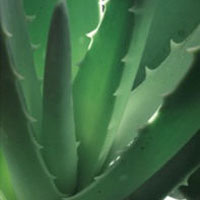Aloe
 © Steven Foster
© Steven FosterSide Effects
Except in the rare person who is allergic to aloe, topical application of the gel is generally safe. For any burn that blisters significantly or is otherwise severe, medical attention is absolutely essential. In some severe burns and wounds, aloe gel may actually impede healing.9
The latex form of aloe should not be used by anyone with inflammatory intestinal diseases, such as Crohn’s disease, ulcerative colitis, or appendicitis. It should also not be used by children, or by women during pregnancy or breast-feeding.10
Aloe latex is very potent and should be used with caution, as it has been reported to cause cramping.11 In people with constipation, aloe latex should not be used for more than ten consecutive days as it may lead to dependency and fluid loss. Extensive fluid loss may lead to depletion of important electrolytes in the body such as potassium.12
Copyright © 2026 TraceGains, Inc. All rights reserved.
Learn more about TraceGains, the company.
The information presented by TraceGains is for informational purposes only. It is based on scientific studies (human, animal, or in vitro), clinical experience, or traditional usage as cited in each article. The results reported may not necessarily occur in all individuals. Self-treatment is not recommended for life-threatening conditions that require medical treatment under a doctor's care. For many of the conditions discussed, treatment with prescription or over the counter medication is also available. Consult your doctor, practitioner, and/or pharmacist for any health problem and before using any supplements or before making any changes in prescribed medications. Information expires December 2026.















